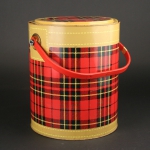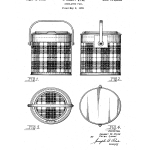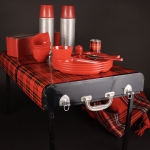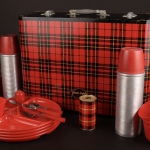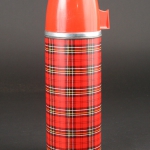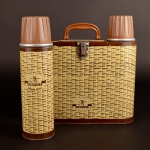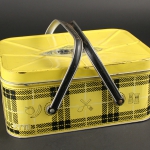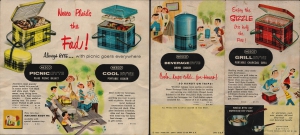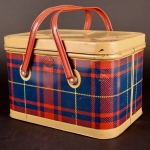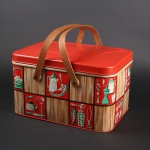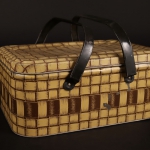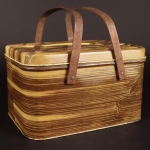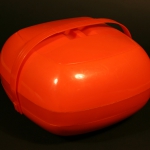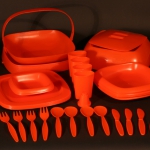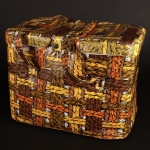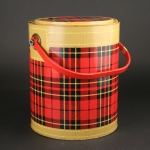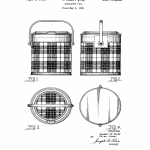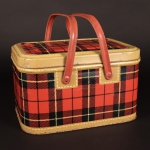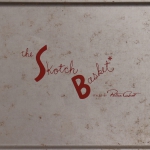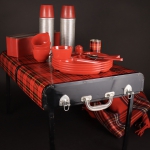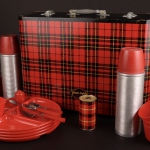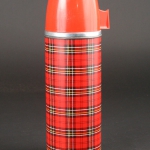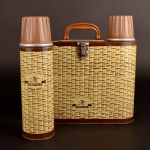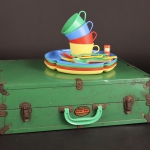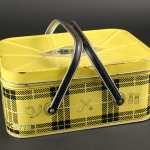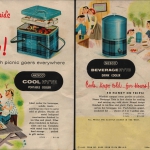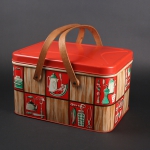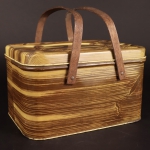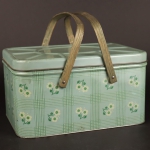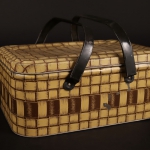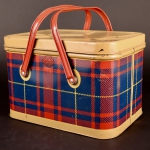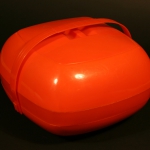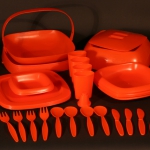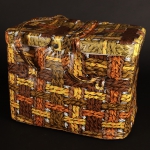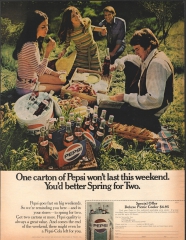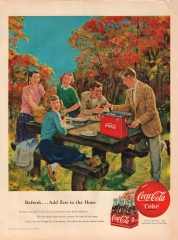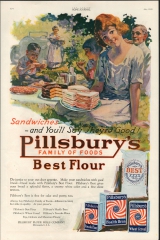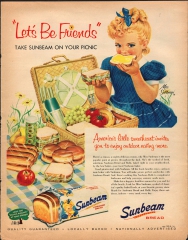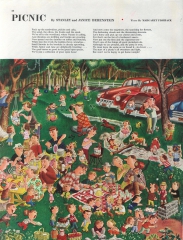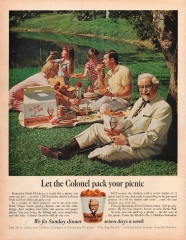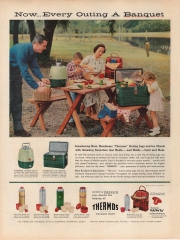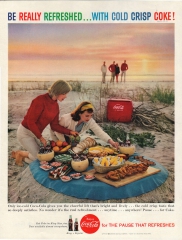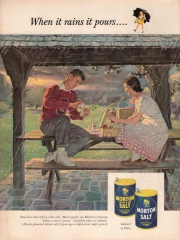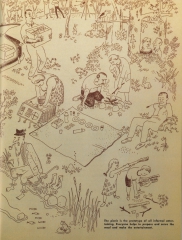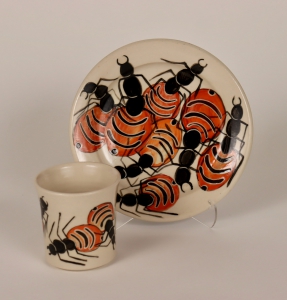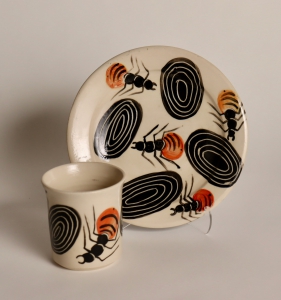Picnic – IMoDD

Historical Picnic Ware from the IMoDD Collection
Metal Picnic Baskets, Portable “Picnic Basket” Metal Suitcases, and plastic inventions galore!
Gaining popularity in the 1940s and 1950s, metal picnic baskets provided a modern option for picnic-goers who had previously utilized traditional wicker hampers. The Hamilton Sheet Metal Company introduced the tartan-plaid Skotch Basket (IMoDD 2025.104) in the mid-1950s as a companion to their iconic 1952 Skotch Kooler (IMoDD 2017.28), designed by Petra Cabot (1907-2006). While the metal picnic baskets (IMoDD 2015.13, 2017.71, 2024.83, 2025.2, 2025.7, 2025.8) were sturdier than the wicker variety, additionally they frequently offered a removal lid that could function as a serving tray on a picnic. Nearly all metal picnic baskets created by Nesco and other companies had vents for circulation and tight-fitting lids to keep the picnic contents fresh and away from insects and other pests. Many had matching accessories, some with insulated linings for keeping food and drinks cool. Prior to their focus on metal picnic baskets, the Hamilton Sheet Metal Company, located in Hamilton, Ohio, produced mail boxes and food graters.
The Skotch Kooler inspired the Skotch Jug, the portable table top Skotch Grill, and Skotch Ice (IMoDD 2025.10), reusable metal canisters that could be frozen before placing into the cooler or basket to keep foods cool. An example from the ensemble can be seen in the tartan-bedecked portable “picnic basket” suitcase created by another like-minded company, Gotham Industries, Inc. in New York. The two examples of portable picnic basket suitcases in the IMoDD collection manufactured by Royalshire (suitcase company) (IMoDD 2025.9) and Gotham Industries (IMoDD 2025.10), reflect the convenience of conveying all of your picnic gear inside one portable suitcase that will convert to a table with legs folded inside the suitcase. Gotham Industries also created the wonderfully designed metal Sportster picnic set with basketweave design in tin lithography with a deep compartment in the center for sandwiches and two thermoses to keep beverages hot or cold on either side (IMoDD 2024.45).
There were many imitators of the Skotch Kooler and Skotch Basket. One excellent example is Nesco who in an original marketing brochure included with the purchase of the Nesco Picnic Ryte Plaid Picnic Basket that IMoDD owns from 1955 advertises their own “Nesco Picnic Ryte Plaid Picnic Basket, Nesco Cool Ryte Portable Cooler, Nesco Beverage Ryte Drink Cooler, and Nesco Grill Ryte Portable Charcoal Grill,” in yellow, turquoise and red tartans. The popularity of the original Skotch Kooler and Basket products caused the Hamilton Sheet Metal Company to change their name to Hamilton-Skotch. Many of the products they produced at the time contained plastic components. The company ceased to exist by 1979. A new company now produces these products under the Skotch Kooler USA brand.
Along with all the wonderful tin lithography on metal picnic baskets came a wide range of plastic innovation in picnic ware. One literally cannot ignore the vivid possibly 1960s-1970s Picnic Master orange plastic mod dishes set. Although boxed up a compact 10” x 10” x 7” set, there are 34-pieces included in the original box with illustrations on the exterior packaging that show how to pack and store it from the Hong Kong manufacturer. Similar sets were created in Spain and Italy in orange and yellow and a variety of colors. It’s possible that only an engineer can get it back to its original configuration to fit in the box. (IMoDD 2015.4)
Equally impossible to ignore is one vinyl picnic basket with its puffy basketweave design with its metal snaps and loops and total 70’s vibe. It is unlikely the plastic ware included with the basket is authentic, but the vinyl picnic basket or chest is unmistakably vintage 1970s, manufactured by Nappe-Smith in New Jersey. The obscurity of the maker is immaterial to appreciating its aesthetic attributes. It was advertised as being both “practical and fashionable.” It’s a bit of a time traveler at this point in picnic history.
Vintage Picnic Ads and Publications
Contemporary Artist
Lynette Lewis (Aboriginal Australian, b 1987)
Puti Pikiniki – Bush Picnic, 2023
stoneware, hand-painted and glazed
plate Diam: 7.5” cup H: 3.25”
2023.19, 2023.20 Museum Purchases
Lynette Lewis’s exquisite designs contain imagery depicting the tjukurpa (dreaming) of her father’s country. “Makiri is the place near Fregon where I went with my father to find tjala (honey ants).” In 2023, Lynette created a sixteen-piece plate and cup setting as an interpretation of going out on Country and having a picnic, which was included in IMoDD’s Fifth Biennial Juried and Invitation Exhibition Entomophagous Dining (Eating Insects) in 2023. IMoDD acquired two of the plate and cup sets. Tjala or honey ants live in nests about a metre underground beneath mulga trees. They are a highly favoured food source for anangu (people) on the Anangu Pitjantjatjara Yankunytjatjara (APY) Lands in the remote northwest corner of the state of South Australia in the centre of the continent. The tjala tunnels that lead down to the ants’ nests are called nyinantu, and the larvae are called ipilyka-ipilyka. After the rain when the ground is soft the women go digging for tjala by looking for the drill holes under the mulga trees. They then use shovels and crowbars to dig down following the tunnels to find the tjala inside. Anangu suck the delicious rich honey-like liquid from the distended abdomen of the tjala. The story of the tjala is told across the Northern Territory into South Australia and is an important link between Anangu mythology and inter-dependence on the environment.
LINK to more about Lynette Lewis.

